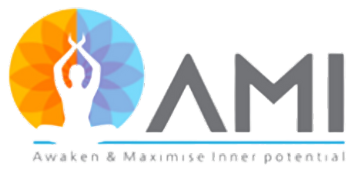Authors: Shyamala Salian, Megha Dhargalkar.
Asana photos : Alpa Mehta
Chair yoga practice is for everyone irrespective of age, physical or mental condition or even beginners to enable holistic wellness. It is affordable, accessible, there are no barriers like the weather or physical balance related issues and with low chances of injuries.
Above all Chair yoga has incredible benefits of improved flexibility, concentration and strength, it boosts your mood, reduces stress and joint strain. It is a gentle low impact form of yoga that’s done while seated or using a chair for balance. Whether it’s from your office, the comfort of your own home or in a class. Chair yoga is a great way to integrate movement into your daily schedule!!
Rapid strides in technology have made lives increasingly sedentary or there is inactivity due to mobility issues. A physically inactive or sedentary lifestyle may have profound impact on your mental and physical health. For example: loss of muscle and bone strength, low immunity, hormonal or metabolic imbalances, anxiety, depression etc. The consequences being a heightened vulnerability to chronic illnesses !
Approximately 2 million deaths per year are attributed to physical inactivity as per the World Health Organization (WHO).The preventive measures recommended by WHO are moderate physical activity plus relaxation and a healthy nutrition.
The impact of movement — even slow movement can be very significant to achieve holistic wellness. It might lead to increased energy , enable better muscle tone and mental well-being, especially as you age.
If you are in a heightened state of stress most of the time, it may disrupt nearly every system in your body. It may even rewire the brain, leaving you more vulnerable to anxiety, depression, and other mental health issues.
Chair yoga is a beneficial form of yoga for any fitness level enabling holistic wellness. These practices despite being done seated are safe, therapeutic, improve musculoskeletal endurance and mental wellbeing. Additionally, psychomotor functions improve (i.e., grip strength) ,dexterity, steadiness etc.
It is important to note that the purpose of yoga is not the ability to perform complex postures ,but to develop mind-body awareness (holistic wellness). A key point is to ensure clearing with your medical consultant prior to starting chair yoga in case of illness.
Overview:
- Yoga, has a powerful effect imparting a sense of wellbeing and giving you a mental boost. This is due to release of endorphins or the “ feel good” hormones, an excellent reason to make sure it forms part of your daily routine. If your yoga practice is currently on hold due to time or mobility constraints you may have noticed reduced mood and energy levels.
- “Sitting is the New Smoking” is a phrase coined by Dr.James Levine. So, it’s no myth that too much sitting is hazardous to your health (just as smoking is) — and sitting less and moving more contributes to better overall health.
Below are some practices that convert the same sitting into stretches that enable holistic wellness.
Choose an armless chair that allows you to keep your knees at 90 degrees when seated. You need to back up the chair to a wall to keep it steady and ensure the floor is level to avoid wobbling. Try to sit tall while practising and use your abs to maintain a good posture. Ensure you take steady and deep breaths while holding the pose.
Below asanas have been adapted to a chair with added variations: –
Benefits will get heightened as you are gradually able to hold the asana for longer durations.
Warm ups: Before commencing the practices do some warm ups (6-8 repetitions each) like curling and stretching toes, ankle /elbow/knee bends, shoulder shrugs, neck rotations etc.
1.Chair Surya Namaskar (Sun salutation) https://learn.amiyogaglobal.com/courses/master-the-surya-namaskar
2.Marjari-asana (Cat stretch pose): Improves flexibility of the neck shoulders and spine.

Technique:
- Sit on a chair with your back long and feet firm on the floor.
- Place your hands on your knees or at the top of your thighs.
- Inhale raising the head and arch your spine so the back becomes concave and roll your shoulders down and back.
- Exhale, round your spine and drop your chin to your chest, letting the shoulder and head come forward and bring chin to chest.
3.Gomukhasan: (Cow face pose) Below version is adapted for a chair. The posture stretches the shoulders, underarms, triceps and chest. Avoid in case of shoulder injuries or surgeries.

Technique:
- Sit with your back long and feet firm on the floor.
- The left arm is bent and brought behind the back, while the right arm is brought over the right shoulder.
- The hands attempt to hold behind the back.
- Hold for 5 breaths. Repeat on the opposite side.
4. Prasarita padottanasan (wide legged forward bend): Avoid in case of BP, vertigo, migraine or spinal issues. Refreshes the brain and calms the mind. Stretches the back of the legs, spine, shoulders and chest. Opens up the hips.

Technique:
- Keep a folded towel on the floor in front of the chair.
- Sit on the chair with your feet set widely apart. Keeping your hands on your hips, exhale slowly bend forward half way.
- Place the palms on the floor fingers facing forward. Bend the elbows as you lengthen the spine to touch the crown of your head to the floor. Ensure back of the neck is long. Keep shoulders relaxed. Hold as long as comfortable
- To release slowly raise the head, neck and shoulders with inhalation.
5. Dwikonasan (two angle pose): This asana strengthens the muscles between the upper spine and the shoulder blades. Also, good for the chest and neck. Avoid in case of back pain or BP.

Technique:
- Sit comfortably on the chair, back erect , legs at 90 deg angle from the body.
- Extend the arms behind the back and interlock fingers. Inhale.
- Exhale, bend forward from the hips so that the back and face are parallel to the floor. Inhale, raise the interlocked arms behind the back as high as possible without strain. The arms act as a lever accentuating the stretch to the shoulders and chest.
- Hold the pose as long as comfortable.
- Exhale, slowly lower arms to the back and return to the upright position. Repeat 2-3 times.
6.Veera Bhadrasana I (warrior pose) : This pose strengthens and stretches your spine and glutes. Also strengthens your thigh, calf and ankle and the back of your thigh (hamstring). Avoid in case of high BP or vertigo.

Technique:
- Keep the right leg in position on the chair while you swing the left leg behind you, (see photo)
- Put the sole of the left foot on the floor, roughly parallel to the seat of the chair and straighten the left leg.
- Keep your torso facing over the right leg and with inhalation raise your arms up to the ceiling. Make sure your hips are aligned square to your body.
- Hold for five breaths and repeat on the opposite side.
7. Veera Bhadrasana II (warrior pose):This asana helps build strength , vigour and stability – like a warrior. Strengthens legs, hips, spine and opens the chest. Avoid in case of hip pain or surgery.

Technique:
- Keep the right leg in position on the chair while you swing the left leg behind you, (see photo).
- When you exhale, open up your arms with the right arm coming forward and the left arm going back.
- Pull the left hip back and turn the torso to the right, so that it is aligned with the front of the chair. Make sure your hips are aligned square to your body.
- Gaze towards the right fingertips and hold the pose for five breaths and repeat on the opposite side.
8.Parshwakonasana (side angle pose) : The asana strengthens and improves the flexibility of the ankle, knee, hip and shoulder joints. The quadriceps, hamstrings and calf muscles are toned by this practice. Avoid in case of hip or pelvic injury.

Technique
- Keep the right leg in position on the chair while you swing the left leg behind you, (see photo).
- Start leaning sideways and align the right heel with the left heel. Exhaling bend the right knee at an Angle of 90 degrees
- Place the right forearm adjacent to right foot or on the thigh just above the knee.
- Extend left arm and place it over the back of left ear, palm facing the floor. Head , arm and trunk to be in a straight line.
- Remain for 30 seconds to 1 minute. Inhale to come up.
- Reverse the feet and repeat for the same length of time to the left.
9.Vrikshasana(tree pose): The posture resembles a strongly rooted tree and hence the name. It enables balance ,focus and strengthens the legs.

Technique
- Lift the right leg up and rest your folded knee on the chair with the right foot resting on the inside or behind the left thigh with toes pointing down.
- Balance well on both legs, ensure folded knee is pointing to the side.
- Bring hands in front of the chest in namaskar position. Once steadiness is achieved in this pose you may lift both hands upwards above the head, palms joined together.
- Stretch up the hands as far as possible. Hold as long as you can while breathing deeply.
- To release slowly bring the hands down and then bring down the right leg on the floor next to your left leg. Repeat with the other leg.
10. Ashwa sanchalanasan (equestrian pose) : This asana helps to remove backache, deepens breathing, eliminates bronchial issues and keeps the entire spine supple. Avoid in case of hyperthyroidism, or spinal issues.

Technique
- Stand in front of the chair with one leg about 3 feet in front of the other. Bend forward and rest your palms flat on the chair at shoulder width distance, with the fingers pointing forward.
- Bend the front knee until your thigh is parallel to the ground. Do not let the front knee bend over your toe.
- With inhalation slowly raise the head, neck, shoulders and chest. Hold as long as comfortable.
- Slowly push back the front heel to come upright and repeat on the other side.
11. Natrajasan (Lord Shiva’s pose): Good for balance and improves coordination. Strengthens back, hips and legs. Avoid in case of BP , spine or hip related issues.

Technique:
- Stand against the back of the chair.
- Bend the right knee and grasp the ankle with the right hand behind the body.
- Maintain balance, slowly stretch the right leg back as high as comfortable. Make sure that the leg is raised directly behind the body. Hold for as long as comfortable.
- To release lower the right leg to the floor. Repeat on the opposite side.
12. Adhomukha Shwanasan (standing downward dog pose): Gives a good stretch to the nerves and muscles of the shoulders and chest. Avoid in case of BP, abdominal or spinal issues

Technique:
- Stand facing the chair. Place palms on the seat of the chair fingers facing forward.
- Step back so that the back is stretched.
- Keep the head in a straight line with the spine and try to bring the chest towards the knees.
- Elevate the hips creating an inverted ‘V’ shape. Press your heels onto the floor and tilt your tailbone upwards. Hold for as long as is comfortable.
- Walk closer to the chair to gently release the pose.
13. Vakrasan (spinal twist): This pose simultaneously stretches the muscles on one side of the back and abdomen while contracting the muscles on the other side. Avoid in case of abdominal or spinal issues

Technique:
- Bend the right leg and place the right heel beside the left inner thigh
- Place the left hand on the right ankle and the right hand at the back of the chair.
- Exhale, twist the waist, shoulders and neck to the right. Look over the right shoulder or face in front.
- Release the right hand first and then release the waist, chest and the neck and face front. Relax and then repeat on the other side.
- Optionally, you can sit sideways keeping both legs on the floor and twist the waist, shoulders and neck and look over the right shoulder.
14. Chair Shavasan (corpse pose): A good relaxation for the mind and body after the wonderful asana workout, enables holistic wellness.

Technique :
- Sit with your buttocks and back resting on the backrest of the chair. Keep eyes closed with your right palm over left in Padma mudra or resting loosely on your lap.
- Rest for a few minutes, simply observing the sensations in your body. When you’re ready, gently open your eyes.
These chair yoga asanas can keep you active and improve your health and well-being. Don’t be discouraged if you skip a few days or even a few weeks. It happens. Just get started again and slowly build up to your old momentum.
You can’t completely eliminate stress from your life, but you can control how much it affects you. When practiced regularly, chair-yoga can reduce your stress levels and boost feelings of joy and tranquillity.
Research also suggests that yoga can produce an invigorating effect on mental and physical energy that improves fitness and induces a balanced mental state (holistic wellness)
Ancient teachings and modern science align on one aspect – your body, mind and emotions are part of one cohesive system. When you influence one aspect of your system, you impact all of it, reaping dividends!
Leverage your yogic dividend, given yoga is a great preventive medicine to enable self-healing!!
To learn more, get in touch with us at https://amiyogaglobal.com/old .
References:
- Asana, Pranayama, Mudra, Bandha by Swami Satyananda Saraswati
- Healthline.com – 13 benefits of yoga that are supported by science
- https://medlineplus.gov/healthrisksofaninactivelifestyle.html
- https://www.mayoclinic.org/healthy-lifestyle/adult-health/expert-answers/sitting/faq-20058005?p=1
- https://www.helpguide.org/articles/healthy-living/chair-exercises-and-limited-mobility-fitness.htm
- Yogajournal.com>health> women’s health
- https://www.futurelearn.com/info/courses/musculoskeletal/0/steps/25161
- https://www.bizjournals.com/milwaukee/news/2018/10/22/why-sitting-is-the-new-smoking.html



